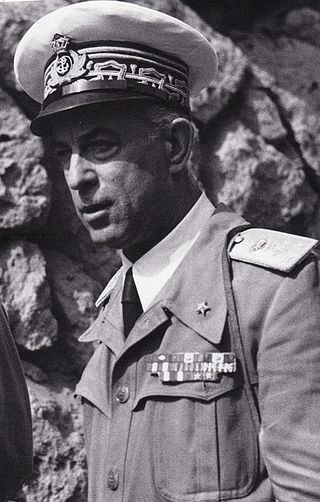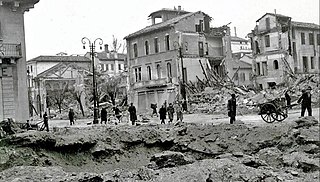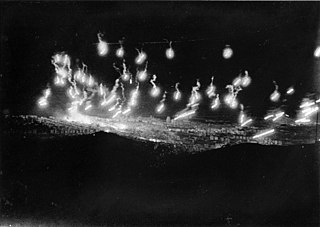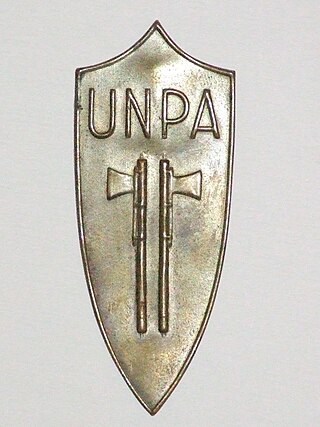History
The Pisa Centrale railway station was considered by the Allies to be of strategic importance for railway communications in central Italy, as it was the intersection point between the Turin-Genoa-Rome-Naples railway line and the Livorno-Florence railway line; this led to several Allied air raids aimed at its destruction. Additionally, the district of Porta a Mare housed several factories engaged in war production, and the nearby San Giusto airfield was a base for the Regia Aeronautica.
The first and heaviest raid took place on 31 August 1943, when 152 Boeing B-17 Flying Fortress and Consolidated B-24 Liberator of the United States Army Air Force, having taken off from airfields in Tunisia, dropped 408 tons of bombs on the Porta a Mare district, where the railway station was located. This raid was also part of the intensified Allied bombing campaign over Italy after the fall of Benito Mussolini on 25 July 1943, aimed at pushing the new Badoglio government to surrender. The raid began at 13:01, during lunchtime, and lasted seven minutes. The air raid sirens had been sounded at noon, but owing to a number of false alarms during the previous months, a large part of the population did not go to air raid shelters, believing this to be yet another false alarm; this contributed to the high death toll. [1] [2] [3] [4]
At 13:01, the first bombers started dropping their bombs over the Porta a Mare power station. 367 bombs were dropped on the Saint-Gobain factory, killing 56 workers while they were at lunch. Italian 90 mm and German 88 mm anti-aircraft guns opened fire, and Macchi C.200 fighter planes took off from the nearby Arena Metato airfield, but were unable to seriously interfere with the raid; only four of the 152 B-17s and B-24s were shot down. [5]
The railway station, the objective of the raid, was hit and badly damaged; at the same time, however, the entire part of Pisa located south of the Arno river suffered heavy damage, with the Porta a Mare district being virtually razed to the ground. 2,500 homes were destroyed or damaged, and several historical buildings were also hit, such as the Palazzo Pretorio and the churches of San Paolo a Ripa d'Arno and Sant'Antonio Abate. At least 952 inhabitants of Pisa were killed, according to the official figures; other estimates claim that the death toll was higher, up to 2,500 victims. [6] [7] [8] [9]
Further raids
After this attack, Pisa suffered further heavy raids by both the USAAF and the Royal Air Force on 23, 24 and 25 September, 4 October and 25 December 1943, and on 18 and 19 January and 14 February 1944. [10] [11] All these raids were aimed at either the airfield or the marshalling yard, but caused further damage and casualties to the city as well. In the summer of 1944 Pisa also suffered heavy artillery shelling by the advancing Allied forces.
By the time the Allies liberated Pisa, on 2 September 1944, 48% of all homes in the city had been destroyed; most of the damage was concentrated in the districts south of the Arno, where few buildings had escaped damage. [12] Civilian deaths from air raids and shelling were 1,738. [13] [14] [15]
The city's most famous landmarks – the Cathedral, the Leaning Tower and the Baptistery – had survived unscathed. Still, the Camposanto Monumentale, after being spared by the air raids, was hit by artillery shelling, with the loss of many of its frescoes. Many other less famous churches and historic palaces suffered damage, although this was repairable in most cases. [16]

Terni is a city in the southern portion of the region of Umbria, in Central Italy. It is near the border with Lazio. The city is the capital of the province of Terni, located in the plain of the River Nera. It is 104 kilometres northeast of Rome and 81 km south of the regional capital, Perugia.

Operation Corkscrew was the code name for the Allied invasion of the Italian island of Pantelleria on 11 June 1943, prior to the Allied invasion of Sicily, during the Second World War. There had been an early Allied plan to occupy the island in late 1940 but it was cancelled when the Luftwaffe arrived in the Mediterranean.

Rome was bombed several times during 1943 and 1944, primarily by Allied and to a smaller degree by Axis aircraft, before the city was liberated by the Allies on June 4, 1944. Pope Pius XII was initially unsuccessful in attempting to have Rome declared an open city, through negotiations with U.S. President Franklin D. Roosevelt via Archbishop Francis Spellman. Rome was eventually declared an open city on August 14, 1943 by the defending Italian forces.

Bruno Paolo Vespa is an Italian television and newspaper journalist. A former director of the Italian state-owned TV channel Rai 1's news programme TG1, Vespa is the founding host of the programme Porta a Porta, which has been broadcast without interruption on RAI channels since 1996.

As the main economic and industrial center in Italy, and the country's second largest city, Milan was subjected to heavy bombing during World War II, being the most bombed city in Northern Italy and one of the most bombed cities in the country.

Gino Pavesi was an Italian admiral during World War II.

The bombing of Ancona was a series of attacks by the United States Air Force on the city of Ancona in the Marche, Italy during World War II. The raids caused heavy civilian casualties and destroyed or damaged nearly 70 % of the city.

The bombing of Cagliari was a series of attacks by the United States Army Air Force and the Royal Air Force on the Italian city of Cagliari, the regional capital of Sardinia, during World War II. The raids, aimed at destroying the port facilities and airfields of Cagliari, also resulted in the destruction of most of the city.

The bombing of Vicenza was a series of attacks by the United States Army Air Force and the Royal Air Force on the Italian city of Vicenza, Veneto, during World War II. The purpose of these raids was to disable the city's marshalling yard and airport, but the bombing also caused considerable collateral damage to the city itself.

The bombing of Ferrara was a series of attacks by the United States Army Air Force and the Royal Air Force on the Italian city of Ferrara, Emilia-Romagna, during the final two years of World War II. The purpose of these raids was to disable the city's marshalling yard, but they also resulted in considerable collateral damage to the city itself, and over a thousand deaths among the population.

Owing to its importance as an industrial center, home to Fiat and several other industries engaged in war production, Turin, the regional capital of Piedmont, suffered over a hundred raids by the Allied air forces during World War II; the Piedmontese capital was thus among the most bombed cities in Northern Italy, suffering damage to about 40% of its housing stock, and over 2,000 victims among its population.

During World War II the Italian city of Palermo, the regional capital and largest city of Sicily, was heavily bombed by both the Royal Air Force and the United States Army Air Force.

During World War II the Italian city of Bologna, the regional capital and largest city of Emilia-Romagna, suffered nearly a hundred air raids by the Royal Air Force and the USAAF, mostly aimed at disabling its strategically important marshalling yards, used for the movements of German troops and supplies between Northeastern Italy and central Italy. These raids destroyed or damaged almost half of the city, and caused nearly 2,500 victims among its population.

During World War II, Tuscany, the Italian port city of Livorno was repeatedly bombed by the Allied air forces, suffering about a hundred raids altogether, which resulted in it being among the most war-damaged cities in Italy.

Owing to the importance of its port and industries, the Italian port city of Genoa, the regional capital and largest city of Liguria, was heavily bombarded by both Allied air and naval forces during Second World War, suffering heavy damage.

The bombing of Reggio Calabria was a series of attacks by the United States Army Air Force and the Royal Air Force on the Italian city of Reggio Calabria during World War II. All together, Reggio Calabria suffered 24 air raids, aimed at disabling its port facilities, airfield and marshalling yards, leaving most of the city destroyed or damaged.

The bombing of Padua was a series of attacks by the United States Army Air Force and the Royal Air Force on the Italian city of Padua, Veneto, during World War II. These raids were aimed at disabling Padua's marshalling yard, but also resulted in heavy damage to the city and civilian casualties.

The Unione Nazionale Protezione Antiaerea, or UNPA, was a civil defense organisation set up in Italy during the Fascist regime and active during World War II. It was tasked with instructing the civilian population about how to behave in case of air raids, managing air raid shelters, and participating in rescue efforts after the raids.
The bombing of Grosseto took place on 26 April 1943, day of Easter Monday, during World War II. Aimed at disabling the city's air base, it resulted instead in heavy damage to the city itself and at least 134 civilian casualties.

The bombing of Gorla, also known as the Gorla massacre, was an aerial bombing attack on Gorla, a quartiere of Milan, Italy, conducted by the United States Army Air Forces in October 1944. The bombing was precipitated when a navigational error placed an American bomber force over Gorla instead of its intended target.



















